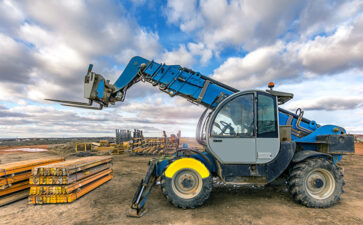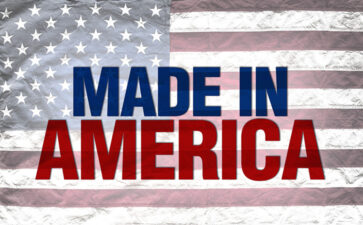The Role of Foam Fill Technology in Today’s Construction Market
The year 2023 has continued to be a period of flux for the domestic construction market. The U.S. residential housing sector has been impacted by higher interest rates, continued supply chain challenges, and labor shortage obstacles creating both slow-downs and market contraction—and unfortunately, 2024 will still feel some of these effects.
But even though the housing market has seen some repression, according to August 2023 reporting from ResearchandMarkets.com, “non-residential building sectors as well as the infrastructure sector and energy and utilities have been improving…Major fiscal stimulus packages such as the Infrastructure Investment and Jobs Act (IIJA), the Inflation Reduction Act (IRA), and the CHIPS and Science Act, will be a key driver of construction activity across these sectors.” Additionally, according to the same reporting, the overall “industry’s output is expected to grow by 2.6% in 2024 and pick up to an annual average growth rate of 5.3% between 2025 and 2027, fueled by investment in the energy, transportation, housing, and manufacturing sectors.” These are clearly reasons to be optimistic about the state of U.S.-based building and development, and the market can likely expect an accompanying positive trickle down for the Off-the-Road (OTR) and the construction-sector related transportation sector.
Even as logistical and economic issues create some disruption, it is expected that the construction industry will also be marked by an increasing evolution and shift in business practices. In 2024, the market is expected to witness a change in overall ways of managing operations—with greater automation and enhanced technologies across the management spectrum business, an increased spotlight on safety, and also a marked shift toward greater sustainability in nearly all areas of business.
This, in turn, creates a host of opportunities for construction industry support and ancillary services—with the role of transportation and heavy commercial/industrial vehicles positioned front and center. OTR and rental equipment, and the earthmoving and work horse machines that every construction site fundamentally relies upon, will likely see a swell in market opportunities commensurate with regrowth in the construction space. Afterall, without effective transportation—and reliable industrial tire technology to support essential commercial vehicles—even the most productive residential or commercial building projects would grind to a quick halt. Excavators, bull dozers, forklifts and telehandlers give every construction site the logistical support needed to “get the job done”—on time and on budget.
TyrFil™ has been the premier manufacturer and distributor of “foam fill” tires since 1971. Our eco-friendly polyurethane liquid fill, once pumped into pneumatic tires, cures within 24 hours to provide a flat free, puncture free tire solution for OTR vehicle and equipment operators. Providing a smoother, less bumpy ride than traditional solid apertures, foam filled tires eliminate the ergonomic nuances of jarring, G-force vibrations that can plague drivers who often spend 8 hours or more behind the wheel. Tire fill is also impervious to the worksite debris that can quickly deflate air-filled pneumatic tires, rendering a vehicle instantly useless the moment a tire runs over a sharp rock, nail or piece of exposed rebar. Because of their resilience to worksite damage, tires using TyrFil offer construction operators higher value because of the technology’s tire protection properties and ensure that critical vehicles remain active on the job site during all peak working hours—ready to deliver needed supplies, raw materials and manpower.
In addition to overall performance benefits, the use of foam fill technology also addresses two areas of the development market likely to take a higher profile in the New Year to come. According to Construction Dive, “the construction industry is not invulnerable to the challenges posed by inflation, labor shortages and supply chain disruptions. With terms like ‘recession’ and ‘economic downturn’ being thrown around, many contractors are concerned about how these issues will affect their business in the coming months and into 2024.” But the publication also notes that “the question isn’t whether the construction industry will make it through the difficulties ahead, it’s how well individual companies will fare.” And the publication notes that “fortunately, knowing what issues the industry faces can help contractors plan for success.”
And two of the most important issues for the coming year will focus on safety and sustainability. These key aspects of construction operator success will likely have a pivotal effect on worksite project management, regardless of external factors impacting the economy.
On the safety front, foam fill OTR tires offer operators several obvious advantages. First, as previously mentioned, tire fill offers a softer ride that is less taxing on the human body’s muscular/skeletal system (making it a better alternative for personal driver health). Second, the fact that TyrFil prevents unanticipated flats makes OTR vehicles vastly safer. (When a large heavy vehicle experiences a sudden puncture or flat, the stability of the overall vehicle is in peril—making it vulnerable to a host of hazards.) Third, foam fill technology allows operators to customize their tires and select a specific durometer that is best suited to particular driving applications. (For example, by allowing operators to adjust tire durometer when the vehicle is operating on an uneven, gradated hillside where the vehicle could be more prone to tipping over makes the vehicle more stable and less hazardous to operate.) In addition to, first and foremost, making equipment as safe as possible for human drivers, TyrFil technology is also far better for general tire and vehicle endurance—and helps to prevent preliminary vehicle axle wear and tear, which can be both costly and dangerous for transportation operators.
On the sustainability front, TyrFil enables tire carcasses to be repurposed and reutilized for second life usage. Whereas discarded solid apertures create a biohazard (e.g., large tire piles are at elevated risk for “tire fire,” and tire scraps sitting in pools of water can become a breeding ground for vector borne disease), foam filled tires breathe new life into used tire carcasses following an unanticipated puncture on the job. The drive to produce an increasingly sustainable construction worksite promoting carbon neutrality will becoming a growing and more urgent priority for both domestic and multi-national construction industry and transportation entities—and TyrFil can help to play an indelible role in reducing unhealthy emissions.
For more information about TyrFil foam fill tire technology and applications for both the residential and commercial building sectors, please visit the TyrFil information page here.
Read related news: A Simple Guide to Foam Filled Tires


